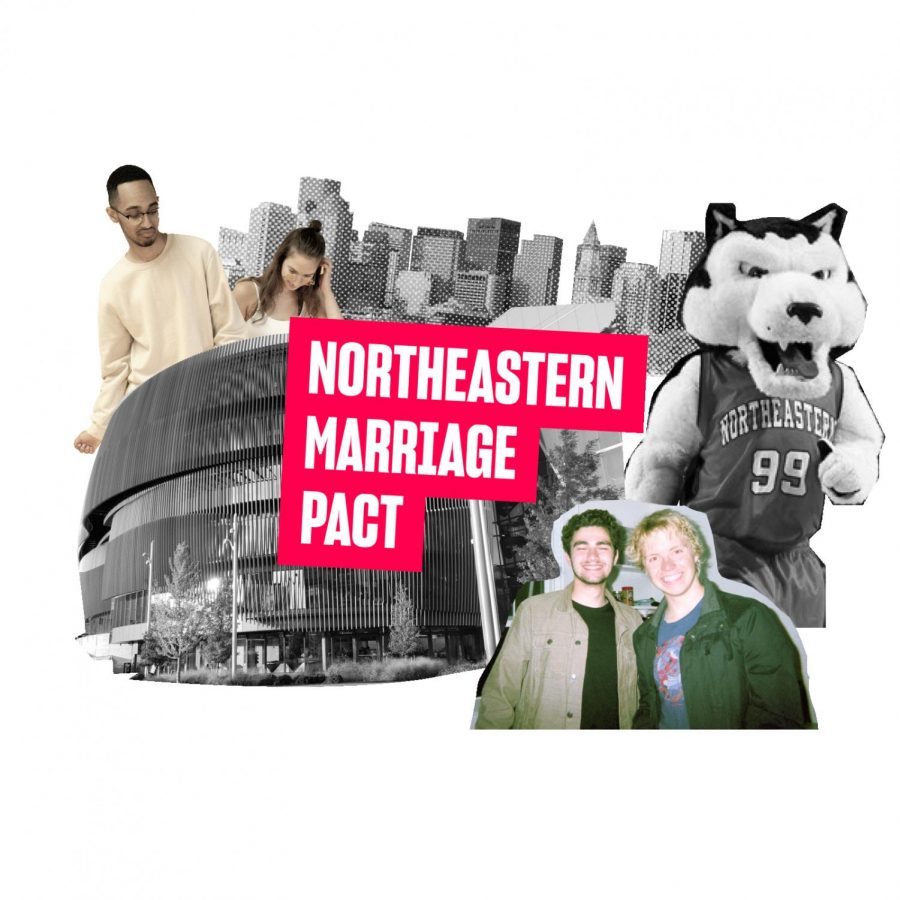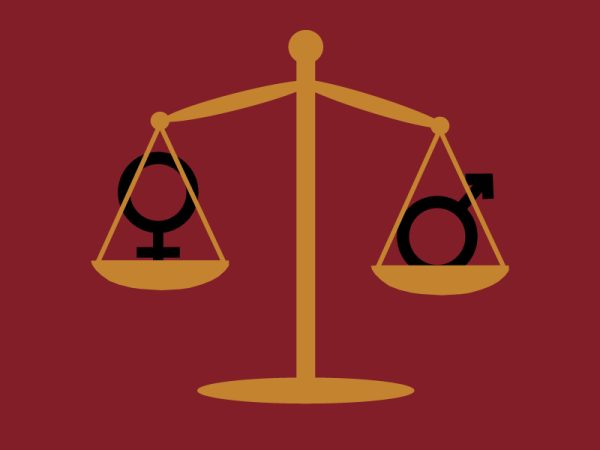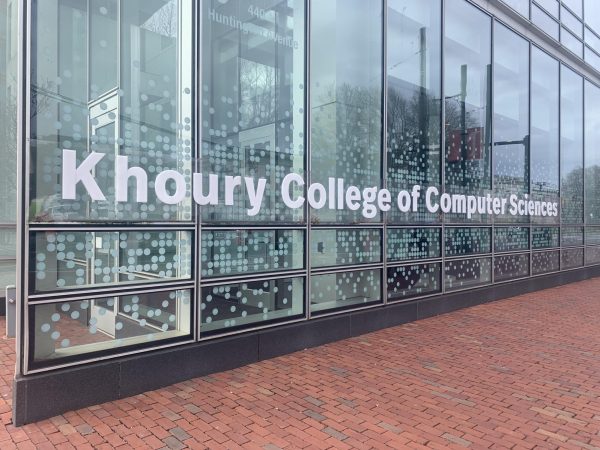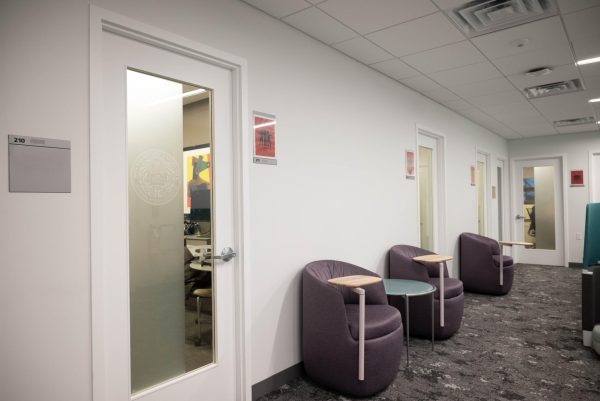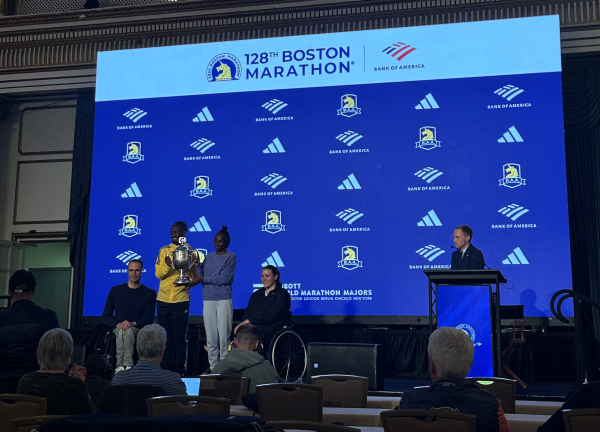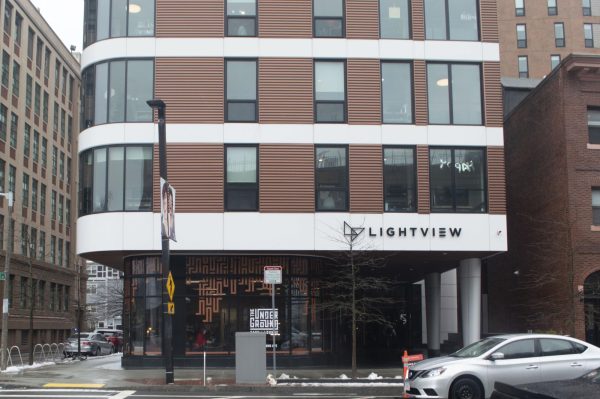Northeastern Marriage Pact creates more than a love connection
Courtesy Northeastern Marriage Pact
Originally as a capstone project at Stanford in 2017, Marriage Pact has made its way to Northeastern as a way for students to find a romantic partner or even a new friend.
March 2, 2021
The idea of a marriage pact in college might sound intimidating, but the Northeastern Marriage Pact offers a highly refined way to meet someone with overlapping interests and interesting differences. Originally created at Stanford in 2017 as a capstone project, the Marriage Pact has made its way to Northeastern.
“I have a friend at Stanford who reached out to me at the beginning of the year, saying that they were looking to expand, and Northeastern was one of their target schools,” said fourth-year behavioral neuroscience major Mollie Harmon.
Harmon created a focus team with fellow fourth-years Katie Prendergast, an international business major; Alex Lopes, a business administration major; and Alaine Bennett, an interaction design major. Together, they selected 50 questions from an established database to include in the questionnaire.
“Out of all of the questions, we tried to find ones that resonated most with the Northeastern community,” Prendergast said.
These questions range from the lighthearted — “Do you feel bad when you kill a bug?” — to more serious questions about values and long-term goals. Since all of these questions come from a psychological database, each has a specific purpose.
“Even though a question might sound silly, it helps us get to know the individual taking the test on a more psychological level,” Lopes said.
The answers to the questions are broken down by the algorithm to find ideal matches.
“It breaks into categories where it’s looking for degrees of similarity, but then there’s also questions where they’re looking for degrees of difference,” Harmon said, describing the general function of the algorithm. “In a sense, opposites attract.”
Since its release, the Marriage Pact has been making the rounds in group chats, Facebook groups and Instagram pages. With the decrease in in-person interactions, social media is more powerful than ever.
In fact, this lack of in-person interaction is what inspired these students to work on the Marriage Pact.
“My heart goes out to the freshmen who haven’t been able to make friends,” Prendergast said. “And that’s one of my biggest reasons for trying to push forward the Marriage Pact in the Northeastern community.”
The team hopes that the Marriage Pact will be able to help create some of the connections that have been missing in the pandemic. “I thought that this would be an easy way to instill a sense of community on campus,” Harmon said. Although students may not be able to meet up in person, a digital match-making scheme could push them to start talking to someone new.
“This is a great way to meet people because this is all just Northeastern students, so you could meet someone in your community,” Lopes said. Especially with concerns about testing status and COVID-19 safety, the university community pool gives the Marriage Pact an edge over traditional dating apps.
However, the Northeastern Marriage Pact isn’t just about relationships.
“It’d be great to have people make human connections and possibly a long-term friendship out of it,” Prendergast said. “I think it’s more of a comical way to find things to do virtually with the pandemic.”
The questionnaire includes a question on your current relationship status, so that students looking for a platonic match can find one too.
Prendergast said the questionnaire already has almost 2,000 responses. “The more we get, the better chances we have to find a really authentic match,” she said.
In the past, schools have had difficulty ensuring that everyone finds a match, given a deficit of certain genders and sexualities. Adding the option for platonic pairings helps with ensuring that matches can be made.
They have also been pushing to get interaction from groups that might be missing. “We’re hoping to reach out to more male individuals to make the deficit smaller,” Lopes said.
With this high initial response, the team is hoping to turn the Marriage Pact into a yearly tradition.
“I’d really like to see this repeated in future years, not necessarily always focused on the romantic aspect, but just some funny stories that we can revisit year after year,” Prendergast said.
Editor’s note: Alaine Bennett, one of the creators of Northeastern Marriage Pact, is a staff member on The News’ design team and former design editor.


